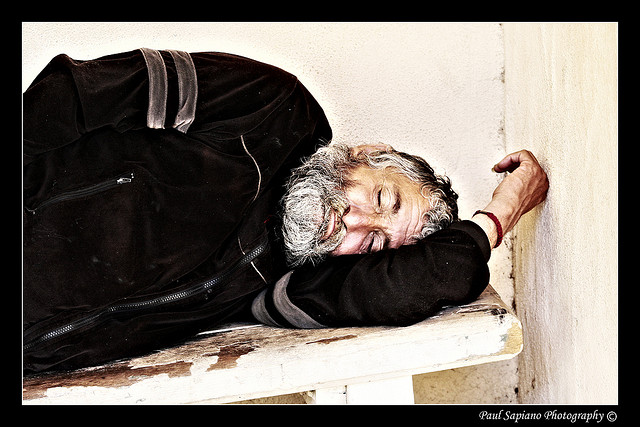During one of my weekend runs, I passed under a bridge where a homeless man was sleeping. I’d been out for an hour or so, and the tea I’d drunk earlier was calling for an exit. As I scouted for a suitable location, it occurred to me that I had a few things in common with that guy.
I run on rural roads, and it is surprisingly difficult to find an appropriate place to relieve myself that isn’t visible from houses or passing cars – and doesn’t involve trespassing or polluting a creek. In town, most businesses won’t let you use their bathrooms unless you are a customer – or can pass as one. When I’ve been running, my looks also have a lot in common with the homeless: my hair is disheveled, I stink, and my clothes are wet with sweat, snot, and mud. But my expensive athletic wear clearly differentiates me, and I can usually get away with using the bathroom at Peet’s or Starbucks.
Of course, what are daily challenges for the Bridge Guy are merely an occasional nuisance in my otherwise comfortable and privileged life. But thinking about these hygiene issues as I ran resulted in deep feelings of concern and empathy for him: “Man, I know how much this sucks when I’m just out for a run, what is it like when you have to think about this EVERY DAY?”
If I try, I can just about always find at least one thing I have in common with almost any random person – even someone I don’t like, don’t understand, don’t trust, or even view as an enemy. Consciously engaging in this exercise at every opportunity helps develop my capacity for empathy. When I hear someone go on a rant about “those people” – or feel tempted to do so myself – I try to ask myself that question: “What might you/we/I have in common with them?” Too many of us spend too much time turning those we don’t agree with into The Evil Other – the world needs more empathy.
[Here’s a simple exercise that can be used as an icebreaker activity. Divide folks into groups of three or four and ask them to find three things that everyone in the group has in common (besides whatever it is that brought you together – working at Company X, being friends of Y, etc.). You can expand it, if you like, by repeating the exercise but asking people to find things they have in common with people NOT in the room. It helps if you can create a persona rather than a stereotype: “Bob, the disabled vet who sleeps under the bridge” versus “homeless people” or “Leticia, a thirty-two-year-old working mother” versus “our target customer.”]
